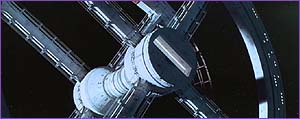V
Valcan
Guest
Hey guys i just have a quick question wondered if ya'll could help me.
To provide artifical gravity to a station or ship in space one idea is to have a ring that rotates. Now i was wondering could this work or would there need to be Two circular habs rotating in different directions to cancel any inertial affects caused upon the rest of a station.
And what i mean is imagine a long tube. There is a ring hab rotating around the tube. Now would there need to be two or would one be fine?
To provide artifical gravity to a station or ship in space one idea is to have a ring that rotates. Now i was wondering could this work or would there need to be Two circular habs rotating in different directions to cancel any inertial affects caused upon the rest of a station.
And what i mean is imagine a long tube. There is a ring hab rotating around the tube. Now would there need to be two or would one be fine?



